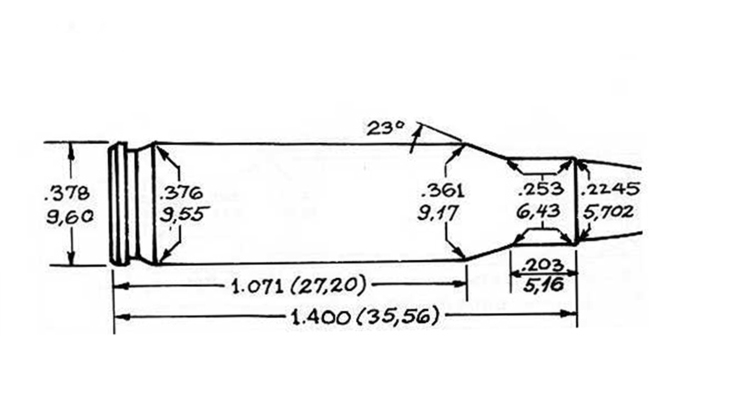
In the early 60s, Remington was working on building a highly accurate experimental pistol based on their Model 600 rifle. Called the XP-100, the actual gun was relatively easy to develop, but Remington wasn’t happy with the performance of the cartridges the XP-100 fired. Initially chambered in .222 Remington, the 10-3/4” barrel fitted to the XP-100 did not allow for a complete burn of power, leading to massive muzzle flashes… not a desirable trait when trying to build a long-range hunting and target pistol.
So, Remington shortened their .222 Remington case and reduced the total powder charge appropriately, and named this new round the .221 Fireball. Like the .223 that came later, .221 still (confusingly) used the same .224” bullet as the .222, but burned a smaller volume of faster burning powder. The result was 40-55 grain bullet travelling at speeds that hovered right around 2,700 feet per second from the XP-100’s short barrel, and a SAAMI approved maximum chamber pressure of a whopping 52,000 copper units of pressure. That’s more than the slower-burning .222 was rated for (46,000) and equal to the maximum CUP pressure for .223 Remington. It also made the .221 Fireball the fastest pistol round ever created; a record that still remains today.
But while the .221 Fireball has seen some use in the XP-100 as well as a handful of rifles, including the Remington 700 and CZ 527 carbine, its effect has stretched far beyond its use. A favourite among wildcatters, the .221 Fireball has been necked down to create .17 Remington Fireball, and necked all the way up to .30-calibre, where it’s lent its case to the far more popular .300 Whisper and .300 Blackout rounds. It’s even been turned back into a quasi-pistol round in the form of the 6x35mm PDW calibre created by Knights Armament for use in their PDW submachine gun.
As a round that remains popular among a very small but devoted subset of shooters, the .221 Fireball’s success has been moderate. Like the XP-100, it’s still out there, bagging varmints and banging targets alike, but history will remember it more for the contributions it has made as a parent case more than its actual commercial viability.